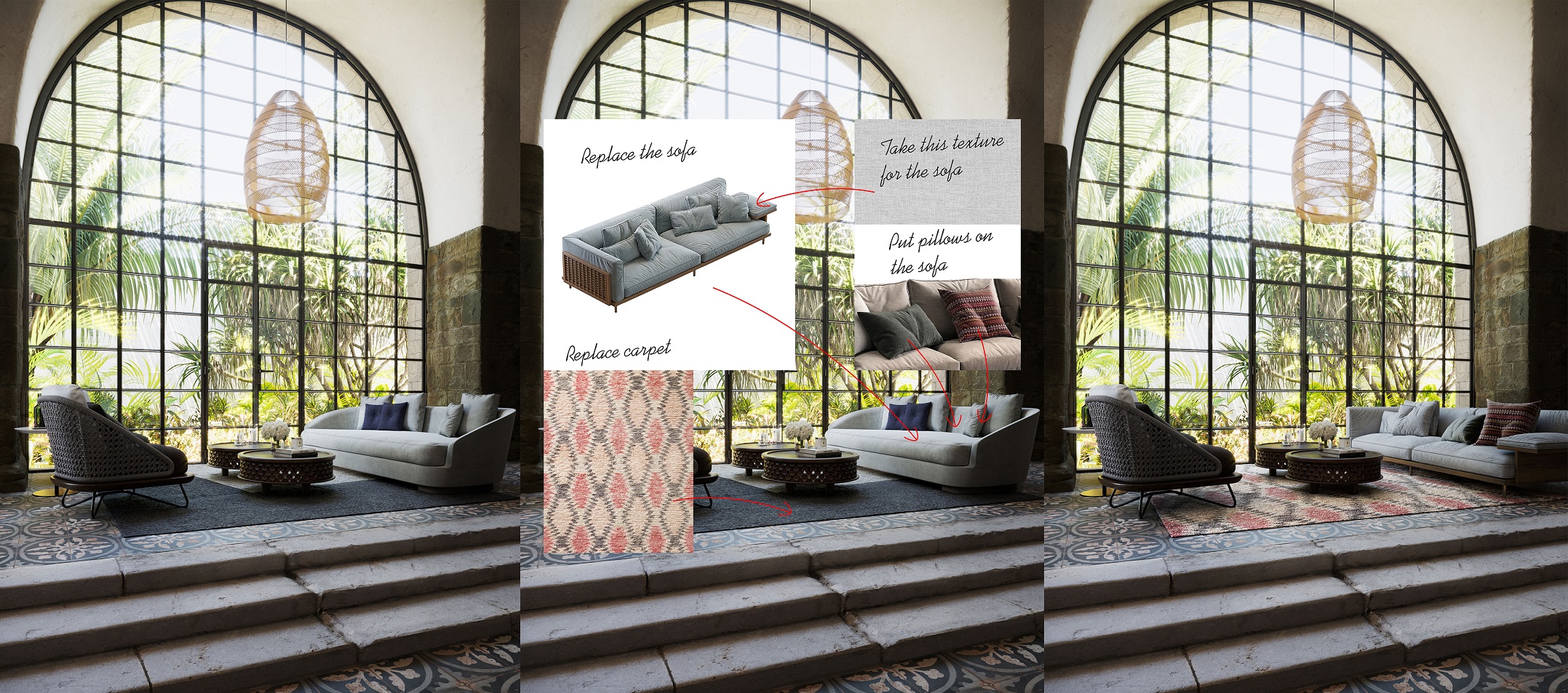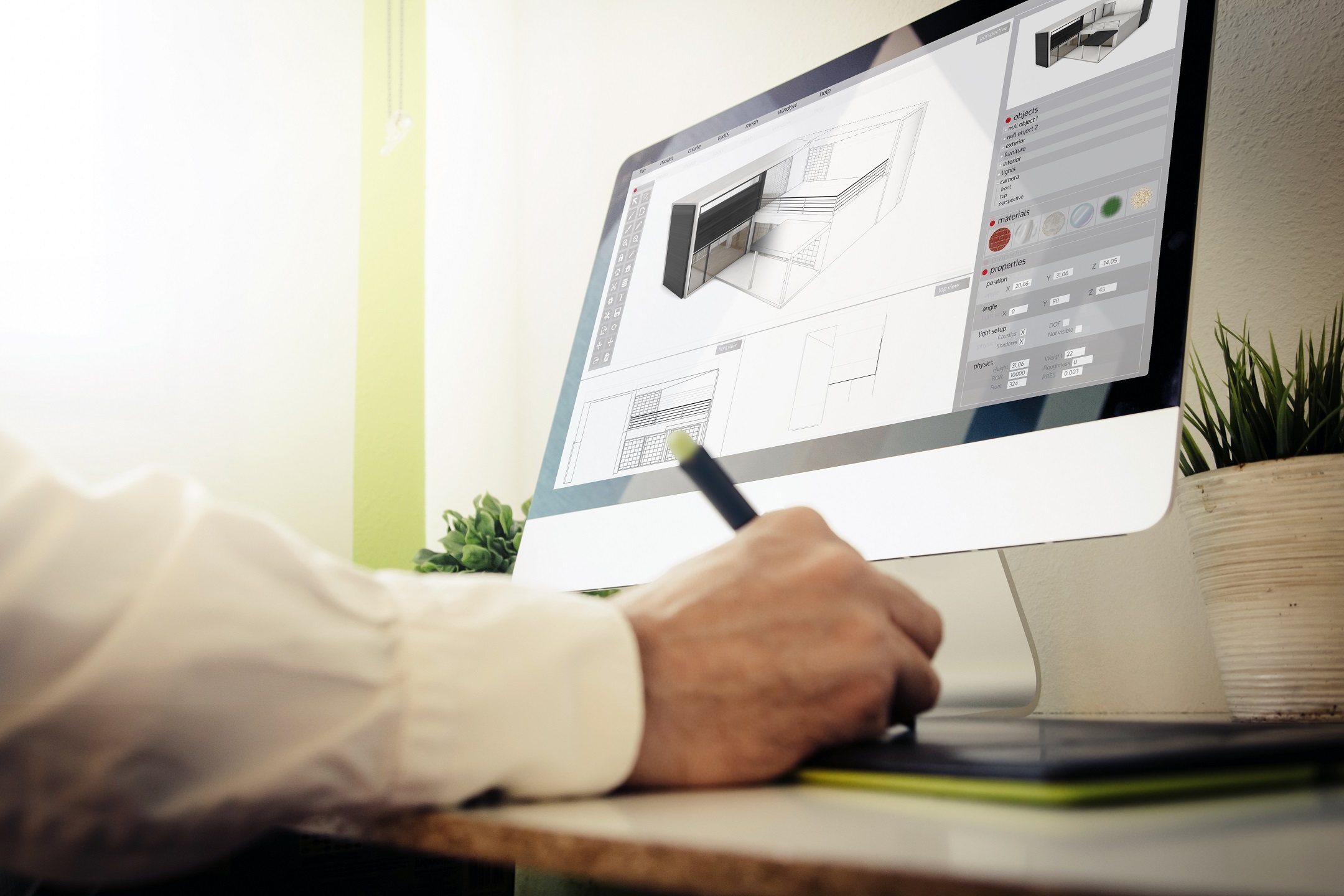Why CGI Has Become a Must-Have for Professionals
Many experts in the fields of architecture, design, and real estate are already enjoying the benefits of CGI. They found out that it is the right tool for creating irresistible presentations and impressive marketing materials.
And to help clients make the most of it, 3D rendering studios do their best to ensure a smooth and trouble-free workflow.
For this, any architectural visualization company has to master the art of working with customers’ feedback. That is the only way to properly organize a result-oriented architectural visualization workflow. To work with clients’ feedback effectively, professional CGI companies use CRM systems.
And ArchiCGI is no exception. Our tailor-made online CGI CRM is built to cater to the client’s needs. It is ideally adjusted for a consistent 3D architecture visualization project management.
Why Feedback Is Key to High-Quality CGI
Our clients can access CGI CRM from anywhere in the world — on a computer or through a user-friendly iOS app. They can upload files to a task chat, track project progress, or request corrections.
The last point deserves special attention. In most cases, the architectural visualization workflow includes several revision rounds. These revisions help ensure that every customer gets top-notch results. Our specialists are always ready to go through as many correction stages as needed to deliver a truly high-end product.
However, in our experience, clients can easily avoid many of these corrections — and this approach helps them save both time and money. To achieve that, they simply need to know how to provide feedback effectively. And we’re here to help!
Of course, we gladly accept feedback in any form. But by following the guidelines below, our clients will get perfect CG visuals faster and with minimal effort. Ready to learn how to save time and simplify the process? Read our five essential tips on giving feedback in CGI CRM!
1. Submit Commentary in a List

There was a great article in the New-Yorker titled “A List of Reasons Why Our Brains Love Lists”.
Mainly, lists are easy to read and therefore simple to understand. They organize and structure information, creating an eye-friendly reading experience. As a result, the human brain immediately recognizes such data as clear and digestible.
For this reason, submitting comments and suggestions in the form of a list is a crucial step toward giving effective feedback in CGI CRM. It helps eliminate confusion and prevent misunderstandings.
Moreover, lists form a strong foundation for a seamless architectural visualization workflow. When 3D artists receive feedback in a list format, they can quickly estimate the amount of work they need to complete and evaluate both timing and budget. In addition, this structure allows both sides to go through points one by one, confirm what’s done, and smoothly move to the next stage.
As for the file format, it’s wise to use PDF documents. They’re easy to create, open on any device, and have a manageable size. In practice, PDFs are ideal for giving feedback because PDF editors include annotation tools that let everyone highlight issues and add comments directly to the document. Finally, all annotations appear neatly on the sidebar, so no one has to scroll through the entire file searching for marked areas.
2. Use Screenshots for References

You’ve heard the saying “a picture is worth a thousand words”? The same applies to screenshots. Compared to paragraphs of explanations about what, where, and how something should be changed, a screenshot always wins.
From our experience, a flawless architectural visualization workflow and screenshots go hand in hand. They’re the perfect communication tool that helps clients express themselves clearly when words aren’t enough. A screenshot instantly shows what needs to be adjusted or helps compare the “before” and “after.”
You can highlight the necessary elements and add short comments right on the image. Taking a screenshot, marking it with arrows, and writing a short note is far easier than explaining every detail in text. And the best part — any simple graphic editor will do the job
How do CGI artists create breathtaking imagery for innovative residential complexes?
3. Make Sure the Text Is Easy to Read

In today’s business world, handwriting has become obsolete. Many people still believe that handwritten thank-you notes carry extra meaning, but that’s their only real advantage. This format disappeared for a reason: beautiful, easy-to-read calligraphy is rare, and handwritten notes are inconvenient to send or update. Once written, they’re nearly impossible to change.
That’s why submitting handwritten feedback in CGI CRM can slow down even the most efficient architectural visualization workflow. It’s always better to send typed corrections.
This way, you avoid follow-up questions, misunderstandings, and mistakes. As mentioned, we welcome feedback in any form — but clear, typed text helps our team deliver results faster and more accurately
4. Send All Corrections At Once

Ideally, it’s best to submit all corrections to the task chat at once. At the very least, send all messages with edits around the same time. Leaving long gaps between messages can, unfortunately, slow down the architectural visualization workflow and create confusion for project managers.
However, if it’s impossible to send everything in one batch, make sure to mention it in advance. For example, writing a short note like, “Project managers can expect the second part of the comments within 48 hours,” helps the team plan their schedule efficiently. This way, the workflow remains smooth, and the project stays on track.
The thing is that in the architectural rendering process, the smallest change can mean hours of work for 3D artists. That is why any changes that are submitted separately without indication that they are a part of a series are assumed to be a new round of corrections.
5. Add as Many Visual References as Possible

More often than not, making information easily digestible means giving it in the form of visuals. So, including as many visual references as possible is a must for providing effective feedback in CGI CRM. Images can be used to explain any aspect of the project.
For instance, a reference image can help 3D artists understand how to tweak the shape of a 3D model, its color, texture, or the overall atmosphere in the render. So, if we’ve hit a standstill in architectural visualization workflow, a visual can save the day.
If there’s a bit of struggle agreeing, for example, on a desired shade of green, or it’s troublesome to provide an understandable description for the texture of a wall, a picture will fix it within seconds.
We recommend the clients of ArchiCGI to follow 5 simple rules when giving feedback on real estate rendering services in CGI CRM. It is highly advised to provide comments in the form of a list, preferably in PDF format, and to make sure that the text of the commentary is easy to read.
Also, it is recommended to send all corrections in one go, to use screenshots, and to add as many visual references as possible. If our customers stick to these guidelines, they can be sure that the architectural visualization workflow will be smooth and the results will be flawless and timely.

Showcase your architectural project like a true work of art, brought to life with cutting-edge AI-powered CGI technology.
Need show-stopping CG visuals of your architecture designs for presentations and marketing? Contact us for top-class 3D visualization services!
Chris Kostanets Chris manages the work of 2 CGI teams and teaches Middle PMs. She loves Scottish landscapes, Ancient Greek culture, and Plein-air painting. At home, Chris is a caring parent for 3 cute chickens and a magnificent rooster.

Senior Project Manager, Mentor



